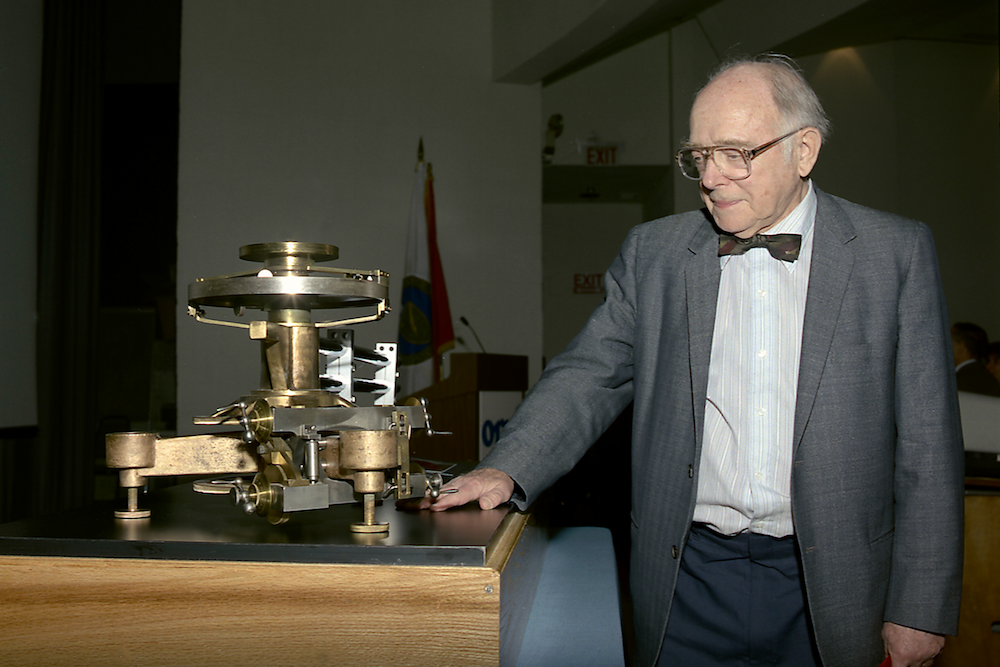
1994
Nobel Prize in Physics
ORNL physicist Clifford G. Shull was awarded the 1994 Nobel Prize in Physics for the neutron diffraction technique he and physicist Ernest Wollan developed nearly five decades earlier.
Shull and Wollan, neutron pioneers

Clifford Shull (left) and Ernest Wollan (right) conducted some of the world’s first neutron scattering experiments using a diffractometer, installed at ORNL’s Graphite Reactor in 1950.
Neutron scattering grew from the nuclear science of the Manhattan Project during the 1940s at what is now Oak Ridge National Laboratory.
In 1942, the first self-sustaining nuclear chain reaction was achieved at the University of Chicago, in a reactor described by physicist Enrico Fermi as “a crude pile of black bricks and wooden timbers.”
In attendance was physicist Ernest Wollan, who traveled a year later to ORNL—then known as Clinton Laboratories—to witness the start-up of the X-10 Graphite Reactor.
Wollan soon moved to Oak Ridge to begin work at the one-of-a-kind facility, which was the first nuclear reactor built for continuous operation, 1,000 times more powerful than Fermi’s Chicago Pile-1. During the Manhattan Project, he studied the use of neutrons to measure nuclear materials. That experience, along with his background in x-ray scattering, quickly led him to realize the potential neutrons held as a powerful new method for studying a much wider range of materials.
“That particle called the neutron became my absorbing interest,” Wollan said at the time.
As rumor has it, Wollan left Chicago in the dark of night with an x-ray diffractometer that he would later retrofit to become the world’s first neutron scattering instrument.
In 1944, he wrote a research proposal asking for funding to use the equipment he brought with him from Chicago to measure the diffraction of neutrons using single crystals, identifying an opening in the reactor in which the work could be done.
His proposal was accepted, and shortly thereafter Wollan successfully made the first powder diffraction measurements recorded using neutrons.
The many firsts of Shull and Wollan, neutron pioneers
In 1946, impressed by Wollan’s results, physicist Clifford Shull accepted his colleague’s invitation to work alongside him at the Graphite Reactor to further develop the technique. Shull’s addition had a profound and immediate impact, so much so that he would later be awarded the Nobel Prize in Physics in 1994 for his contributions to the field. In his acceptance speech, Shull expressed his regret that Wollan had not lived to share the award. (Bertram N. Brockhouse shared the prize with Shull. For information on his work on the development of neutron spectroscopy and other advances, see the Award ceremony speech for the 1994 Nobel Prize in Physics.)
Their collaborations quickly led to the construction of the first instrument exclusively for neutron scattering—the double-crystal neutron spectrometer—as well as the adaptation of automated data recording, which took the place of pen and paper and allowed researchers to collect data overnight.
By 1955, the two pioneers had measured scattering patterns from more than 100 elements and 60 different isotopes. A prolific class of successors emerged who would continue to push the field forward and, in turn, mentor what is the present-day neutron scattering workforce. —Jeremy Rumsey